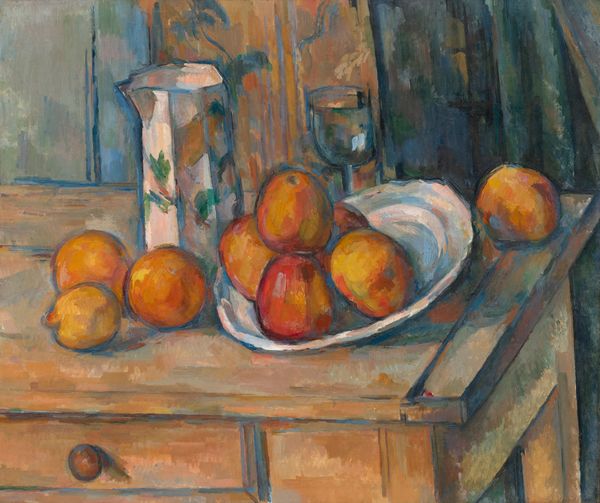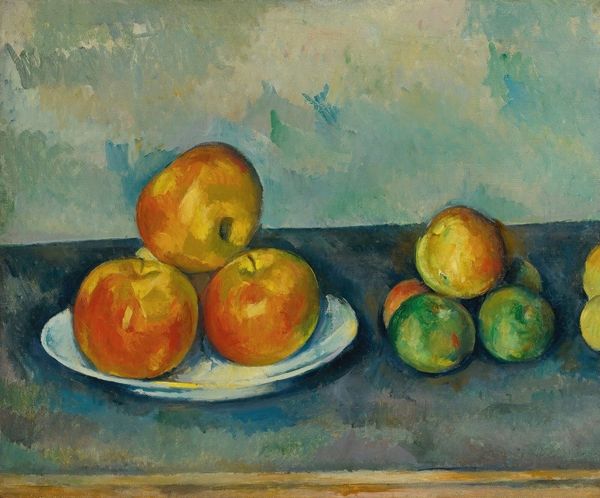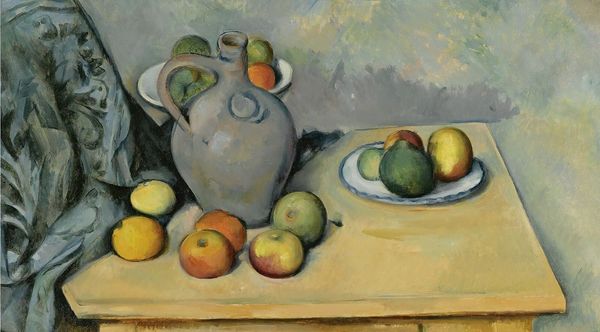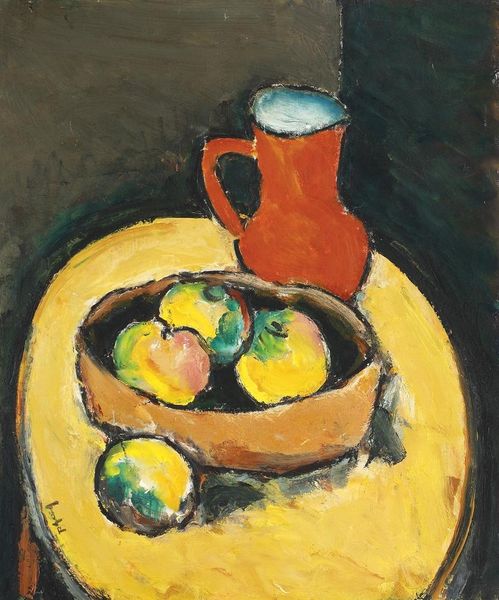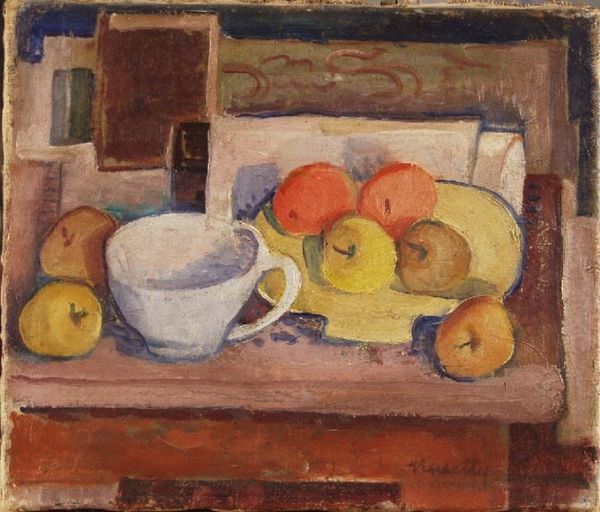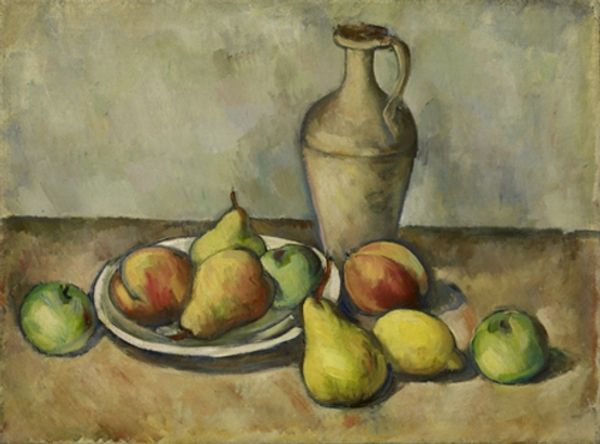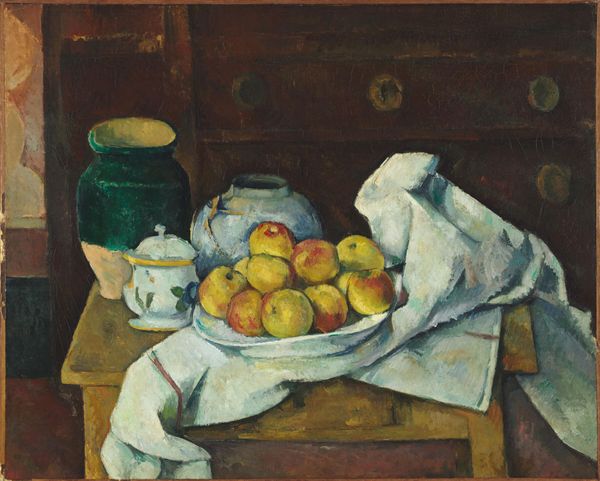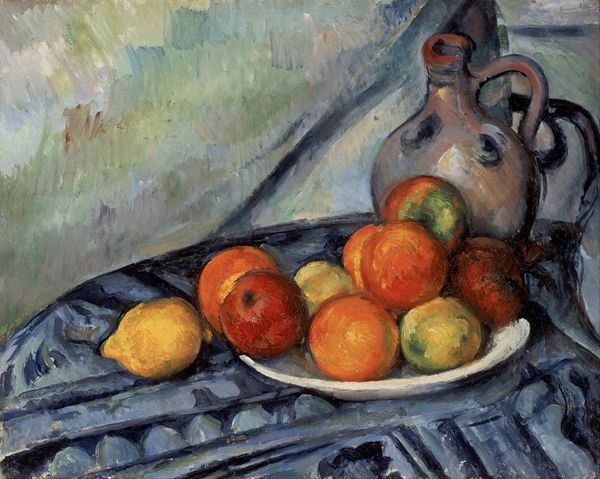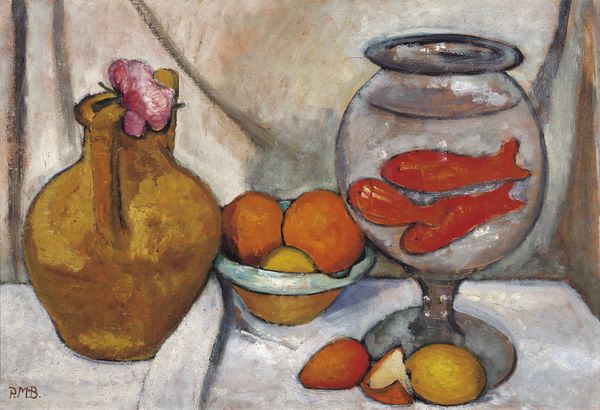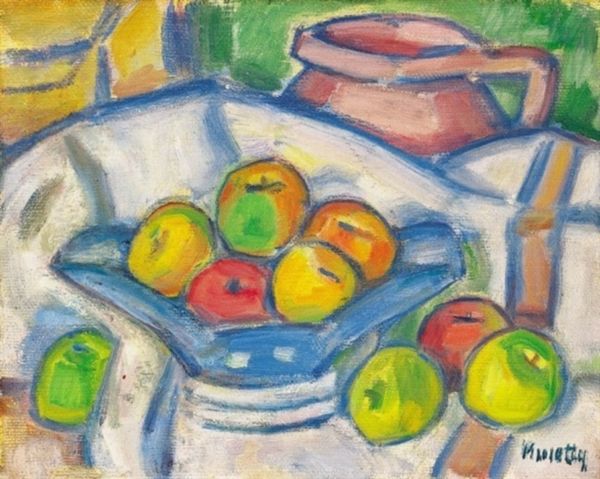
oil-paint, impasto
#
oil-paint
#
oil painting
#
impasto
#
post-impressionism
Copyright: Public Domain: Artvee
Editor: This is "Straw-Trimmed Vase, Sugar Bowl and Apples" painted between 1890 and 1893 by Paul Cézanne. The still life seems so... solid and tangible. I'm really interested in your opinion. How do you read the context around this seemingly straightforward piece? Curator: Well, at first glance it might seem like just some fruit, but Cézanne disrupts our expectations of what a still life should be, and what painting is for, much like many revolutionaries in the history of visual arts.. Notice the distorted perspective and how the objects almost seem to exist in multiple dimensions simultaneously. Editor: It's true, there's a disquieting feeling about it. Curator: Exactly. Consider how Cézanne lived through immense social change in France—from revolutions to the rise of the bourgeoisie. Does this almost violent, constructed perspective hint at an underlying critique of societal structures? A rejection of traditional, idealized representations of bourgeois life? Editor: I never considered the social context. Curator: And the materiality! The impasto, thick application of oil paint, challenges the traditional illusionism expected of painting. This almost aggressively emphasizes the painted surface itself, as a tangible object. Cézanne seems to declare: This is not a window into reality; this is paint, applied to canvas, consciously constructed to mean something. What do you think about the use of light in this piece? Editor: It gives substance to everything, I didn't notice at first. The composition also seems to almost fall towards us. I see it now! It reflects his lived experience, it is quite radical when you think about it. Thanks! Curator: Yes! Hopefully, we've collectively expanded the artwork beyond just an aesthetic observation into something rooted in historical and social dynamics. Keep challenging the surface to see what lies beneath.
Comments
No comments
Be the first to comment and join the conversation on the ultimate creative platform.
